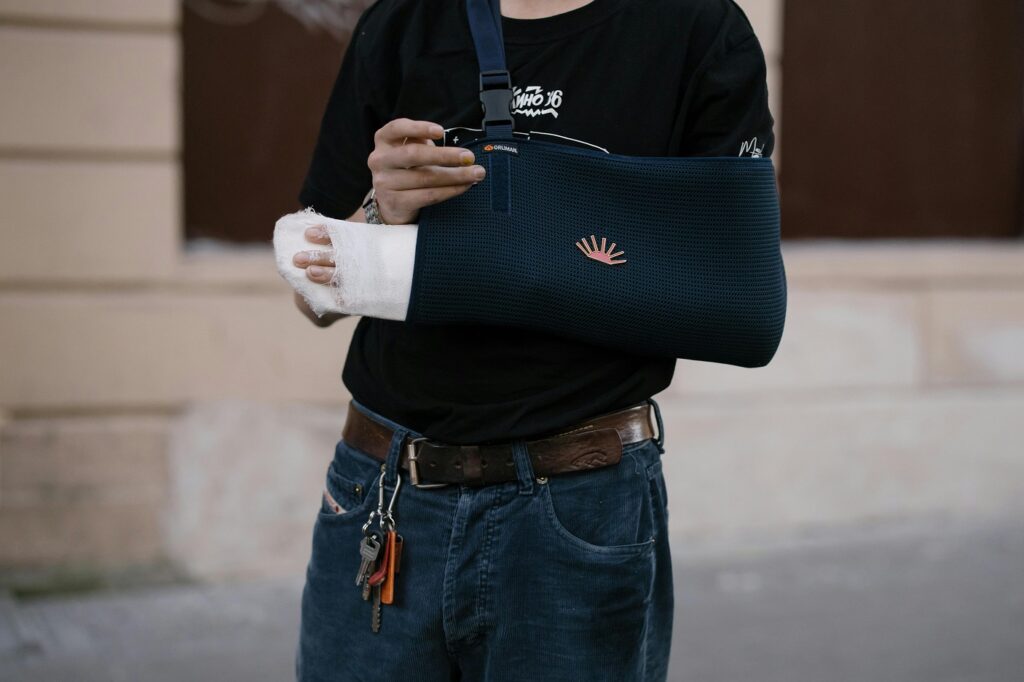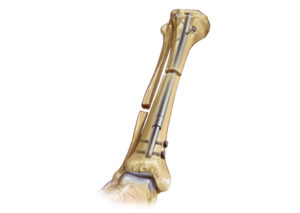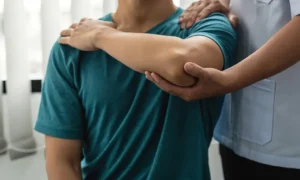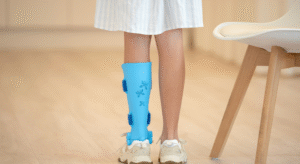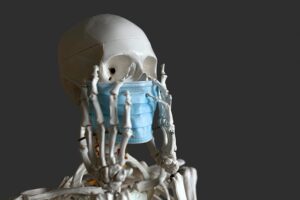Key pointers:
- What fracture casting does and why it’s needed
- Differences between traditional plaster and modern casting materials
- Benefits of fibreglass, waterproof, and 3D-printed casts
- How advanced casts improve comfort, mobility, and hygiene
- When to see an orthopaedic specialist for assessment and fitting
From Plaster to Progress
When you think of a broken bone, you probably picture a heavy white plaster cast that limits movement and can’t get wet. For years, that was the only option. Today, fracture care has moved far beyond the old-style cast.
Modern casting techniques and materials, such as fibreglass, waterproof liners, and even 3D-printed designs, now offer lighter, more comfortable, and more functional support while your bone heals. These newer methods not only improve comfort but can also aid recovery by keeping the limb protected yet mobile enough for everyday life.
Traditional Plaster vs Modern Casting Options
Plaster of Paris Casts
- Made from gypsum, they provide firm support and are often used for initial fracture stabilisation.
- However, plaster casts are heavy, not waterproof, and can crack or soften if they get wet.
- They also take longer to dry and may cause more itching and skin irritation.
Fibreglass Casts
- A popular modern option, fibreglass casts are lighter, more durable, and resistant to water.
- They come in various colours, mould easily to the limb’s shape, and allow X-rays to pass through for easier follow-up imaging.
- When paired with a waterproof liner, patients can shower or swim more easily.
3D-Printed Casts
- The newest development in fracture care, these casts are custom-fitted using digital scans of the patient’s limb.
- They feature an open, ventilated design that reduces itching and sweating.
- They’re also lightweight and can be worn comfortably under clothing, making daily activities easier.
How Advanced Casting Improves Healing
Comfort isn’t just about convenience, it plays a vital role in recovery. When a cast fits well and allows some degree of mobility, patients are more likely to stay active, maintain good circulation, and follow through with rehabilitation.
Key benefits of advanced casting include:
- Reduced discomfort: Breathable materials minimise skin irritation and odour.
- Lighter weight: Easier to move around, especially for children and older adults.
- Better hygiene: Waterproof liners or ventilated designs make cleaning easier.
- Improved healing oversight: Fibreglass and 3D casts allow easier access for scans and adjustments.
Together, these features create a more positive recovery experience, one that supports both the body and the mind.
When to Seek Orthopaedic Advice
Not all fractures are the same. The type, location, and severity of your injury will determine which cast or brace is most appropriate. An orthopaedic specialist will assess your fracture, recommend the best material for stability and comfort, and monitor the healing process.
If your cast feels too tight, causes numbness, or shows signs of damage, you should contact your doctor immediately. Adjustments are often simple but make a significant difference in safety and recovery.
FAQs
- Are fibreglass casts really waterproof?
Fibreglass itself is water-resistant, but whether your cast is waterproof depends on the liner underneath. Special waterproof liners can allow you to bathe or swim, but it’s best to check with your orthopaedic specialist first. - Do 3D-printed casts heal fractures faster?
They don’t speed bone healing directly, but their comfort and lightness make it easier to move, clean, and maintain hygiene, which supports overall recovery and wellbeing. - Can advanced casts be used for children?
Yes. Fibreglass and waterproof casts are often used in paediatric fractures because they’re lighter, easier to clean, and more comfortable for active children. - How long do I need to wear a cast?
It depends on the type of fracture and your body’s healing rate. Most casts stay on for four to eight weeks, with periodic reviews and X-rays to check progress.
5. Is it worth upgrading to an advanced cast?
For many patients, yes. The added comfort, hygiene, and convenience make daily living easier and may help maintain strength and mood during recovery.
Orthopaedic Care with Dr Sarbjit Singh
At the Centre for Advanced Orthopaedics, Dr Sarbjit Singh offers treatment options for fractures, from diagnosis to the use of advanced casting techniques that balance comfort with optimal healing.
Dr Singh and his team provide care for both adults and children, focusing on restoring movement, function, and quality of life after injury.
If you’ve recently suffered a fracture or wish to explore lighter, more comfortable cast options, book an appointment with Dr Sarbjit Singh today and discover how modern orthopaedic care can support your recovery.

